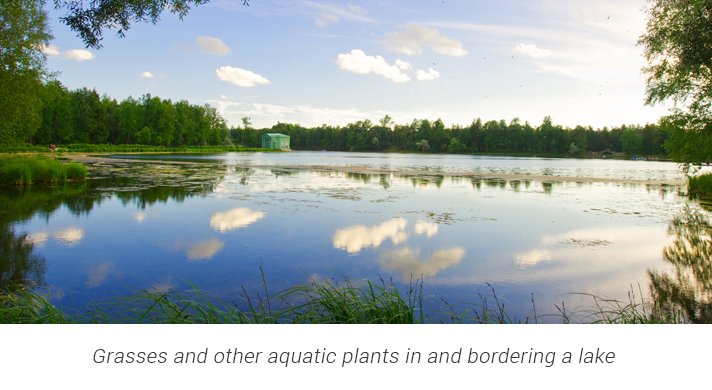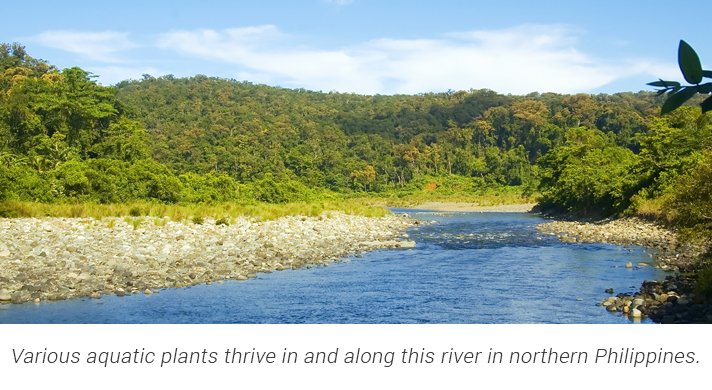The leaves, stems, and roots of aquatic plants have stomata, or small openings, through which oxygen enters during the process of photosynthesis. An aquatic plant is a plant that is adapted to survive in water. It has wide flat leaves that help the plant balance its weight and keep afloat in water.
Freshwater Habitats
Bodies of freshwater such as lakes, rivers, swamps, and bogs are among the main habitats for aquatic plants.
Lakes
A lake is a large body of water that is surrounded on all sides by land. Because it is cut off from other bodies of water, a lake obtains its water from rain and other forms of precipitation that fall directly onto the lake.
Grasses grow in and around lakes. Some of these grasses may grow completely under water and provide shelter for small fishes and small animals. Some plants use their inflated leaves, special hairs, or stems to float along the water’s surface. These floating plants are a hiding place for frogs, fishes, and turtles.
Algae, ferns, pond weeds, reeds, rushes, sedges, and water marigolds are only some of the numerous plants that thrive in lake habitats.
Rivers and Streams
A river is a body of water in which the fast current moves in only one direction. Its water comes from other bodies of water and flows out into a bigger body of water such as another river, a sea, or an ocean. It does not have much solid ground underneath it.
A stream is similar to a river except that it is shallower and smaller. Both rivers and streams come from a high point such as an elevated plain, a hill, or a mountain.
The plants that survive in rivers and streams have flexible stems that enable them to go along with the fast-flowing current without breaking. Some of them also have stronger roots that can hold the plant to the riverbed. These plants include mangroves, rushes, sea grasses, sedges, and water lilies.




